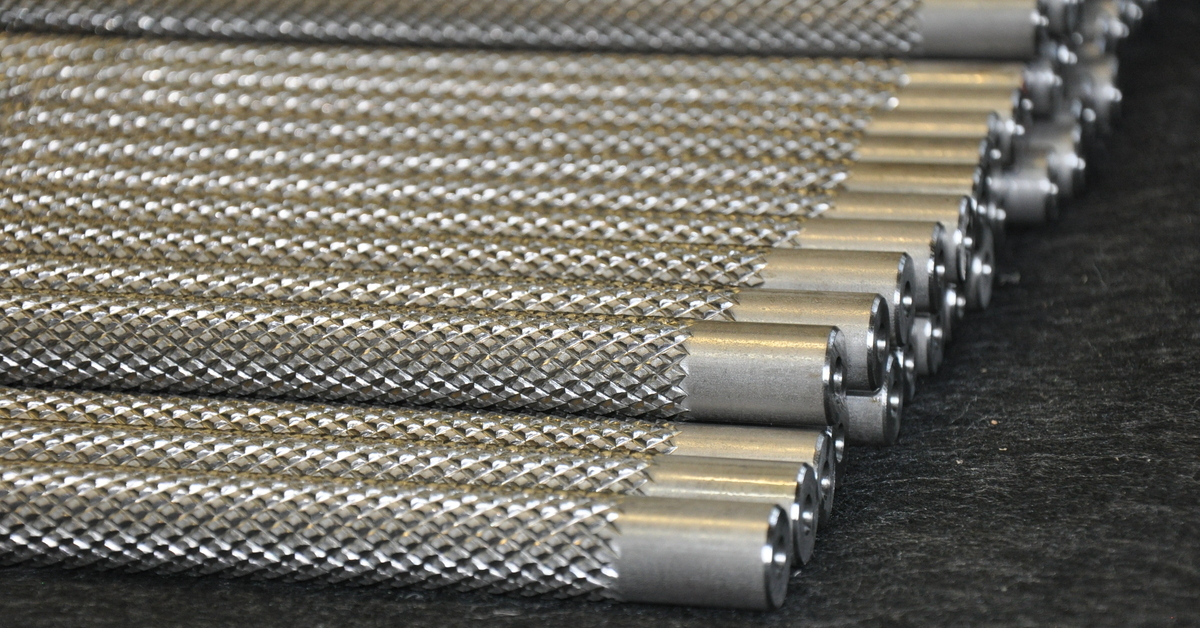
- +8615586668226
- [email protected]
- No. 30, Hongbang Industrial Park, Shenzhen

Knurling is a manufacturing process that creates a textured pattern on the surface of a material, typically metal. Using a knurling tool, this technique enhances grip and aesthetics.
Understanding knurling is essential for producing high-quality, functional components.
Selecting the appropriate knurling tool is crucial for achieving the desired pattern and quality.
The knurling pattern is the textured design created on the material’s surface. There are several types:
Understanding the different types of knurling patterns helps in selecting the right one for your project.
The knurling process involves several steps to ensure a quality finish.
Setup on Lathe
Selecting the Knurling Tool
Executing the Knurling Operation
Finishing
The knurling operation requires precision and attention to detail to produce high-quality results.
Understanding the difference between hand knurling and machine knurling can impact the efficiency and quality of your work.
Choosing between hand and machine knurling depends on the project’s scale and precision requirements.
Knurling is widely used across different sectors due to its functional and aesthetic benefits.
Aerospace and Aviation
Medical Devices
Consumer Products
Robotics and Automation
Our Machining Services cater to various industries, delivering high-quality knurled components.
Utilizing the right knurling tool offers several advantages:
Enhanced Grip
Aesthetic Appeal
Functional Improvement
Incorporating knurling into your designs can elevate product performance and appeal.
Selecting an appropriate knurling tool involves considering several factors:
Material Compatibility
Desired Pattern
Machine Compatibility
Consulting with experts, like our team at CNC Solutions, can help you make the best choice.
Achieving high-quality knurling requires attention to detail:
Proper Alignment
Consistent Pressure
Speed Control
Tool Maintenance
Following these tips ensures successful knurling and optimal product quality.
While both add designs to surfaces, knurling and engraving are distinct processes.
Knurling
Engraving
Understanding the difference between knurling and engraving helps in selecting the right technique for your project’s needs.
1. What are the main types of knurling patterns?
The main types are straight knurling, diamond knurling, and helical knurling, each serving different functional and aesthetic purposes.
2. Can knurling be performed on all materials?
Knurling is commonly performed on metals like steel, aluminum, and brass. Material hardness can affect the knurling process.
3. Why is knurling important in manufacturing?
Knurling enhances grip, improves usability, and adds aesthetic value to products, making it valuable in various industries.
4. How do I choose the right knurling tool?
Consider the material, desired pattern, and compatibility with your machinery. Consulting experts can guide you in choosing the appropriate knurling tool.
5. Is knurling only done on a lathe?
While commonly performed on a lathe, knurling can also be done using specialized machines or hand tools for smaller applications.
6. What is cut knurling?
Cut knurling involves cutting the pattern into the material rather than deforming it, resulting in cleaner patterns on harder materials.
Elevate your manufacturing with expert knurling services. Explore our related offerings:
Image: A skilled technician using a knurling tool on a lathe.
Unlock the full potential of knurling in your next project. Contact us today, and let’s create something exceptional together.
Get the latest trends and facts about CNC fabrication from our blog.
Shenzhen Runkey Precision Technology Co. Ltd, a subsidiary of the Tensun Group, is your trusted one-stop solution for custom manufacturing from prototyping to production.Transforming your idea into reality with digital manufacturing resources,streamlined processes, expert guidance,accelerated timelines, and uncompromising quality.
©2024. CNC Fabrication All Rights Reserved.